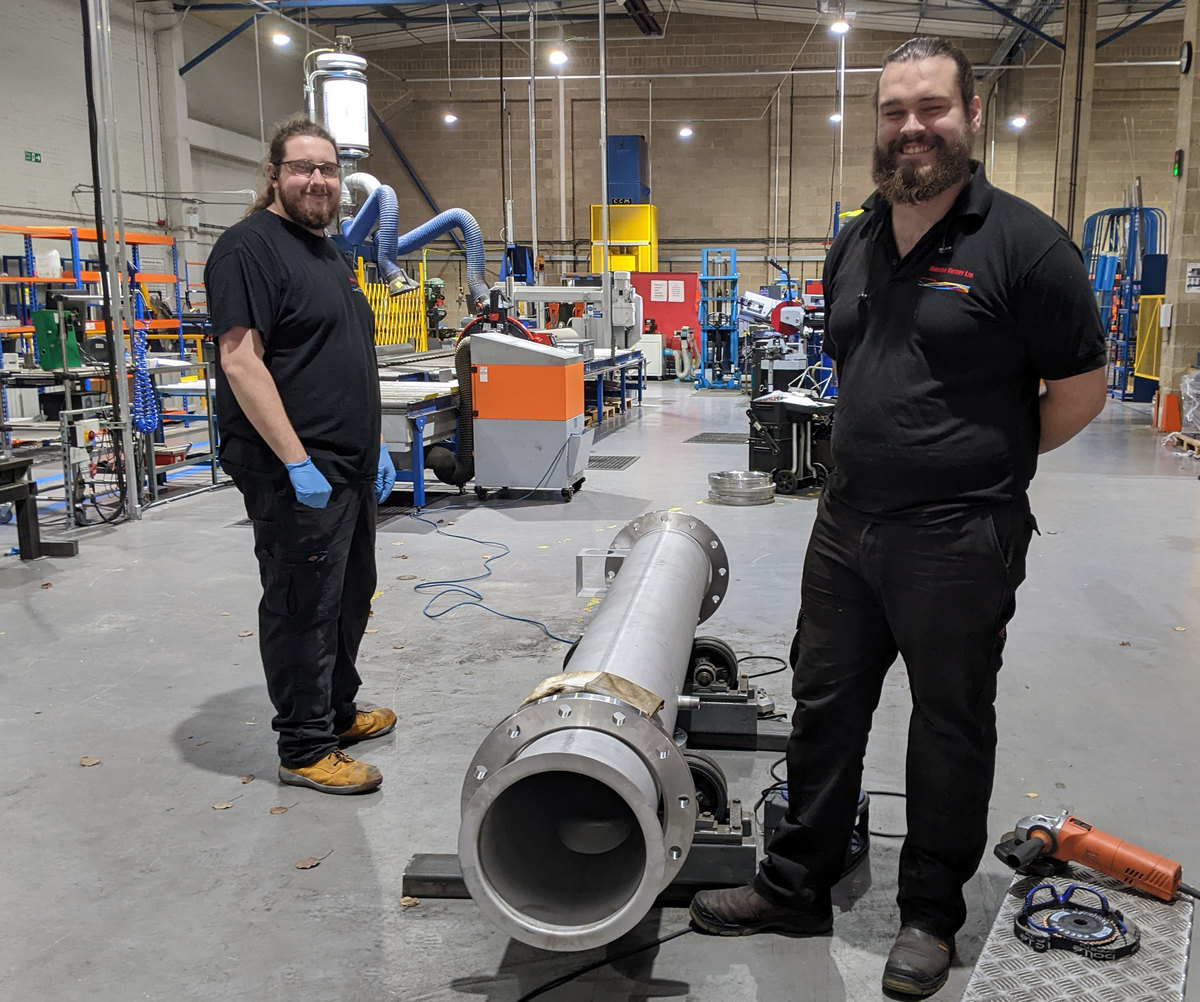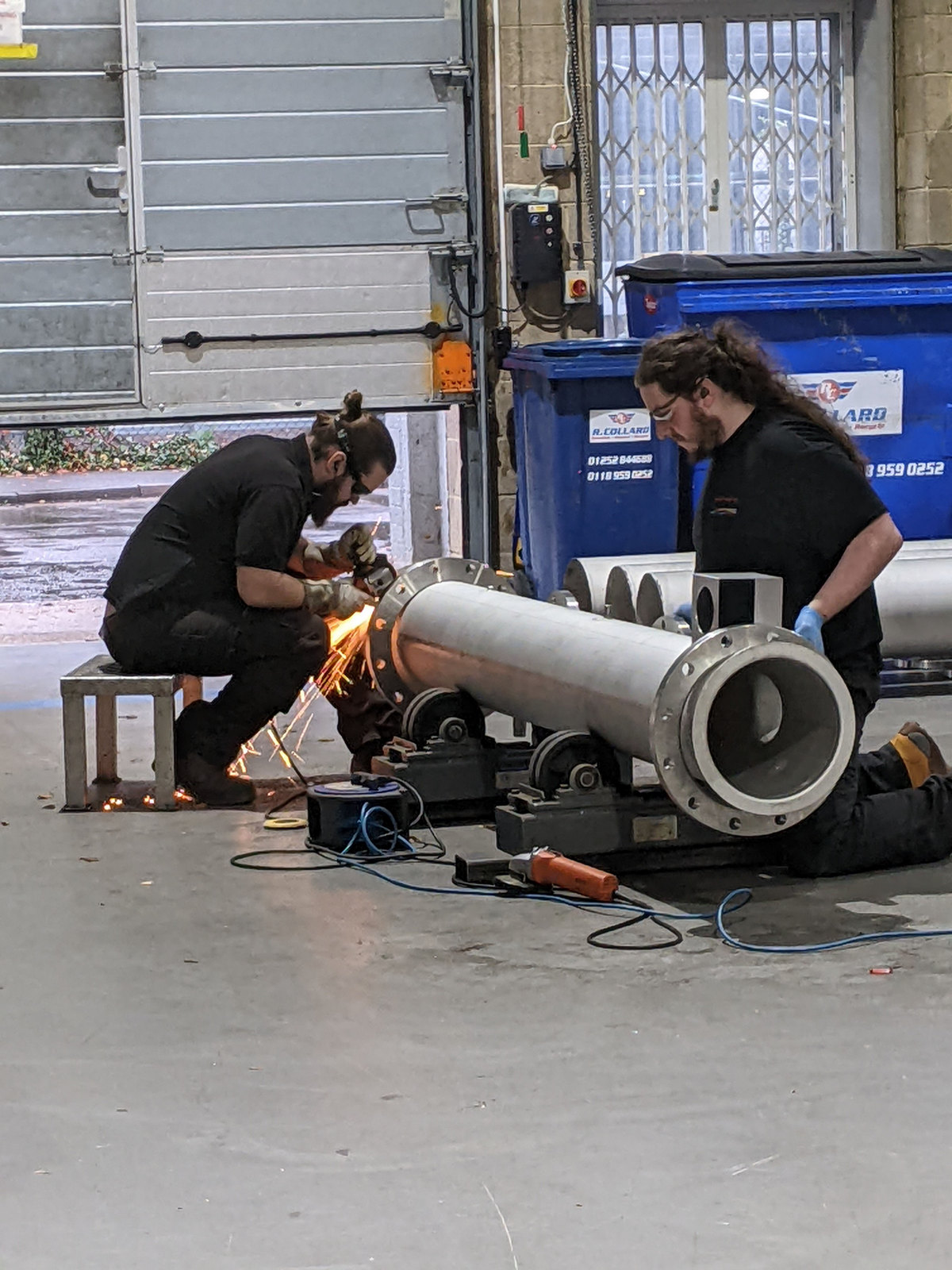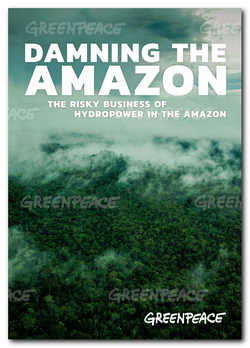Displaying items by tag: Amazon
Amazon Filters boosts component manufacturing with machining investment
Process filter maker Amazon Filters has added more capacity to its housing component manufacturing with two semi-automated CNC mills going live.
Their purchase and implementation are the latest stages in a £1 million investment programme at the Surrey-based firm, which supplies all industries worldwide that rely on process filtration.
Capital expenditure on new machinery supports Amazon Filters’ policy of ‘vertical integration’ in which manufacturing is increasingly done in-house with less reliance on third parties or sub-contractors.
The aim is to support ‘quick and able’ manufacturing, the fast, accurate capacity to turn round customer orders, including complex and bespoke projects, whatever their size and wherever they originate in the world.
 Amazon Filters colleagues Troy Procter, right, Housings Production Support Technician, and Josh Booth, Housing Component Manufacturing Operator, in the firm’s dedicated production hub.
Amazon Filters colleagues Troy Procter, right, Housings Production Support Technician, and Josh Booth, Housing Component Manufacturing Operator, in the firm’s dedicated production hub.
The new CNC equipment complements a doubling of staff numbers in housing component manufacture from six operatives three years ago to 12 now and with a further appointment due in 2023.
Team members work in a dedicated production hub at the 37-year-old firm’s Camberley factory processing raw, hardcore metal bars, blocks, sheets and tubes into parts ready for welding and final housing assembly.
Tube lengths tend to be three or six metres, weighing up to 130kg and with diameters of 12 or 16 inches.
Stored on huge racks, the raw material parts are moved into position for cutting, folding, drilling, marking and other processes using lifting aids including a motorised platform.
Most metal is stainless steel but, for some applications, the nickel alloy Hastelloy is the base material.
At any given time, hundreds of flat discs or plates are in the process of being turned into lids, top ends or end caps and with different-sized holes drilled to suit.
 At work on processing a metal tube as the first stage in housing component manufacture at Amazon Filters’ dedicated production hub. The team operate five distinct cells: sheet metal; de-burring and degreasing (the removal of very fine coats of oil); press; fabrication; and machining, the most recent cell.
At work on processing a metal tube as the first stage in housing component manufacture at Amazon Filters’ dedicated production hub. The team operate five distinct cells: sheet metal; de-burring and degreasing (the removal of very fine coats of oil); press; fabrication; and machining, the most recent cell.
Adrian Price, Lead Fabricator for Housing Component Manufacturing, said: “It’s big-scale work and we represent the start of the process for making housings.
“In line with the company’s expansion, we moved to our separate and bigger hub from under a mezzanine floor in the main production centre in 2019.
“The extra space and capacity have enabled us to do far more in-house rather than rely on subcontractors or third-party suppliers.
“We have more control over what we do, and how, why and when we do it.
“We have done a great deal of in-house training with everyone upgrading to be able to do all the jobs within the department including the use of the new CNC mills.
“Working in conjunction with colleagues in the sales and operations departments, we have made massive in-roads on productivity through dynamic scheduling and greater control over workflows and delivery times.
“From the production point of view, we have more flexibility and can ship a job more easily.
“Say we have a water company requiring urgent filtration equipment to cope with a cryptosporidium outbreak, we have cut lead times, created more scope to customise and improved our ability to turn round the order quickly.
“As the worldwide market expands, the ability to do things in-house becomes more important so we have taken the opportunity to grasp the nettle and improve our processes.
“Our work is very diverse and we relish the challenge of the one-off, for example if you have an oil and gas customer saying they need specific equipment to go that bit deeper in the oceans, it’s great to be able to say we can do it.”
Amazon Filters’ capital investment programme also includes the relocation of storage space and the opening of a new production hall for the manufacture of pleated filter cartridges, a flagship product for the firm.
The capital spend complements recent team appointments on the sales side, including territory managers for the Americas and Asian-Pacific regions.
European companies 'Damning the Amazon'
Greenpeace activists demand Siemens step away from destructive hydropower in the heart of the Amazon
Greenpeace Brazil Report underlines the risky business of construct dams such fragile rainforests
Activists from Greenpeace Germany gathered at the global headquarters of technology giant Siemens AG in Munich, Germany to shine a spotlight on the company’s potential involvement in a new hydropower dam in the Brazilian Amazon rainforest. Siemens, along with dam part providers Voith, General Electric (GE) and Andritz may be lining up to participate in the construction of a massive 7.6 km wide hydropower dam on the Tapajós River, according to a Greenpeace Brazil report, published today. The dam would not only flood huge parts of the rainforest, but also threaten the cultural survival of the 12,000 Indigenous Munduruku People who have lived along the Tapajos River for centuries.
 “Siemens is just one step away from getting involved in the destruction of the heart of the Amazon Rainforest,” said An Lambrechts, Greenpeace International Amazon Project Coordinator. “If Siemens participates in the construction of the Tapajós hydropower dam, the company can expect to be tied to a project with human rights violations, corruption scandals, animal and plant species extinction and the destruction of the culture of the Munduruku Indigenous People. Siemens and the other companies named should instead of focus their efforts on developing genuinely sustainable energy sources”, continued Lambrechts.
“Siemens is just one step away from getting involved in the destruction of the heart of the Amazon Rainforest,” said An Lambrechts, Greenpeace International Amazon Project Coordinator. “If Siemens participates in the construction of the Tapajós hydropower dam, the company can expect to be tied to a project with human rights violations, corruption scandals, animal and plant species extinction and the destruction of the culture of the Munduruku Indigenous People. Siemens and the other companies named should instead of focus their efforts on developing genuinely sustainable energy sources”, continued Lambrechts.
Siemens presents itself as a green powerhouse, but energy production that leads to human rights violations, species extinctions and even negative climate impacts can’t be considered green. So far, Siemens, Andritz, GE and Voith have failed to commit to steer clear of the upcoming hydropower dam construction. Others companies, such as the Italian electricity utility company Enel, have already communicated that they will not be involved.
The new Greenpeace Brazil report “Damning the Amazon” details the risky business of hydropower in the Amazon rainforest and how Siemens and other international companies face serious financial and reputational risks with their involvement in these projects. Enthusiasts of Amazon development try to justify the environmental, social and human rights impacts of hydropower dams in the Amazon with promises of addressing climate change, in reality the construction of these dams causes a considerable amount of greenhouse gas emissions, carbon dioxide and the much more potent methane, as a result of the decay of flooded vegetation and soil.
Also, as a result of climate change, rivers in the region are predicted to undergo dramatic reductions in flow, making new dams unlikely to attain the expected energy output. For the Tapajós River, a governmental study predicted a fall in water flow of up to 30 percent in the vicinity of the projected dam site. The report shows the best alternative is a combination of wind, solar and biomass generation - feasible only if the government were to allow a 50 percent increase in number of contracts auctioned each year for renewable energy sources.
“It is time the Brazilian government admitted that clean hydropower in the Amazon is a myth that sows misery and destruction while failing to provide energy security. Companies should distance themselves from these projects and acknowledge that the economics of large dams in remote tropical rainforests do not stack up,” says Lambrechts.
The recent Belo Monte hydropower complex on the Brazilian Xingu River, also in the Amazon Rainforest, has already proven how dams can trample on Indigenous Peoples’ homes and lead to the destruction of fragile ecosystems. The Belo Monte hydropower project has become part of the largest corruption investigation in Brazilian history with companies having paid millions in bribes for stakes in its construction.
